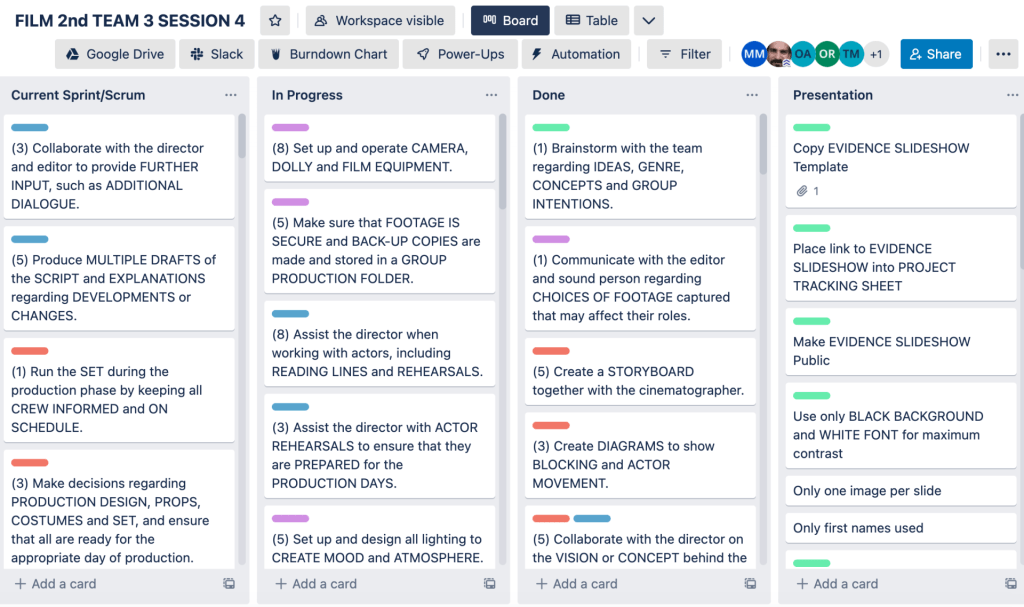
SUMMARY
Role
Screenwriter
Intention (SMART Goal)
By March 1, as SCREENWRITER, I will have evidence of MUSICAL DIALOGUE by following How Aaron Sorkin Creates Musical Dialogue In ‘The Social Network’ for Session 4.
PRE-PRODUCTION – INQUIRY
Leader in the Field & Exemplary Work
Aaron Sorkin – The Social Network
Quick dialogue that draws you in and is impossible to look away from. The flashbacks work and are not hard to follow because they’re recounting events in discovery and then showing the happenings in real time. The Social Network is based off a real story and real people’s lives, and Sorkin respects this fact while also making the film entertaining.
Training Source
0:50 – Aaron Sorkin writes with a specific rhythm that sounds musical and makes dialogue more interesting.
1:15 – Sorkin uses longer lines of dialogue than other writers (mini speeches). 2x as many as When Harry met Sally. He also varies the length of the lines to keep avoid boring repetition.
2:12 – Very few action lines to ensure faster dialogue, as well as characters interrupting and speaking over each other more like a real conversation.
2:40 – Faster dialogue allows for variation in tempo of scene.
3:10 – Sorkin has an extreme amount of repetition. 15% of the sentences in the scene are repeated almost verbatim.
3:56 – “What the words sound like is as important to me as what the words mean.”
5:32 – Sorkin writes in meter, or often has lines that have a repeated stressed and unstressed syllable.
Project Timeline
Pre-Production
January 23: Session start
February 1: Complete Pre-Production Blog Post
February 6 – 10: Set goals, storyboard, build trello
February 13 – 16: Finalize Pre-Production
Production
February 14: Test shoot
February 15 – February 21: Shooting
February 22 – February 24: Re-shooting
Post-Production
February 27 – February 28: Editing
March 1: Evidence due
Evidence of Team Planning and Decisions

PRODUCTION – ACTION
The (FILM, SOUND, or GAME Creation)
Skills Commentary
POST-PRODUCTION – REFLECTION
21st Century Skills
Ways of Thinking (Creativity, Innovation, Critical Thinking, Problem Solving)
I grew in my creativity when I took on the challenge of writing in iambic pentameter, I had to be flexible with my ideas and fit the vision into a certain format.
Ways of Working (Communication & Collaboration)
I have grown in my communication skills because I was absent for a significant part of the session and I had to stay in contact with my team to be up to speed.
Tools for Working (Info & Media Literacy)
I continued my use of celtx and trello.
Ways of Living in the World (Life & Career)
I continued to develop my skills on working with others towards a collective goal.
Reactions to the Final Version
Positive feedback from Miguel: said the last scene looked like the show Hunter.
Gracen said ADR needed work.
Self-Evaluation of Final Version
I think our group had to overcome some obstacles to finish this film, and as a screenwriter, my job wasn’t huge because our script wasn’t dialogue driven but I was proud of my team as a whole.
Grammar and Spelling
Grammarly
Editor
Oscar R.